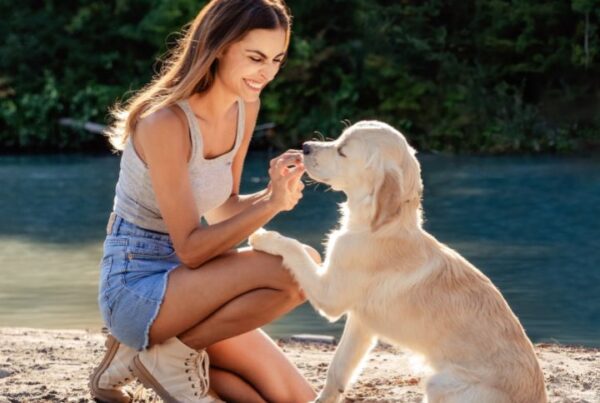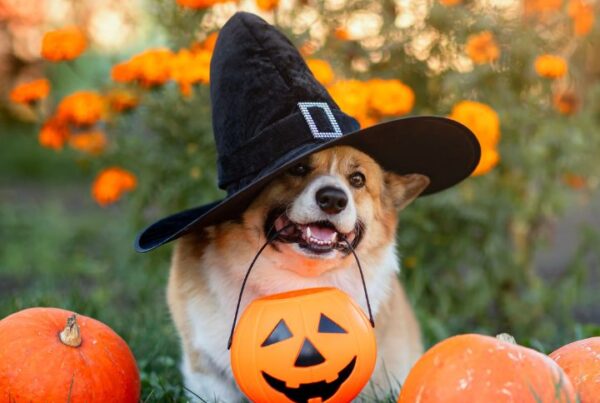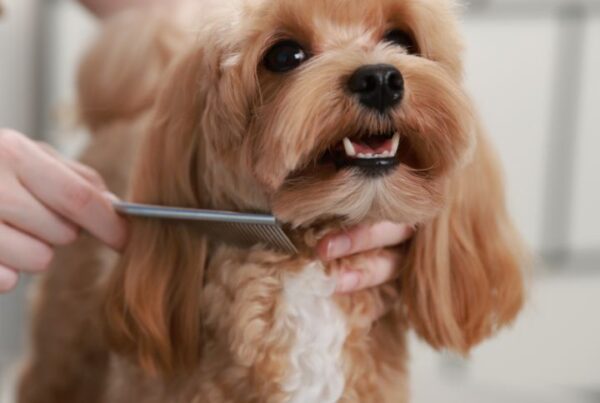While your dog grooming course prepared you well for your career as a groomer, teaching you the best practices for brushing, bathing, and trimming, you also need to understand the overall health of the dogs that come through your salon. After all, a dog won’t be happy unless it’s healthy!
So what are some things you need to know about dogs’ health? Certified dog groomers need to have a trained eye to spot diseases and infections, understand when a pet needs to take a break, and know how to deal with a matted coat – just to name a few! Read on to discover 4 health and dog grooming tips to take your pet grooming game to a new level.
1. How to spot infections
All certified dog groomers know the importance of not rushing into a grooming session. Before picking up a brush, scissors, or preparing a dog to be bathed, a full inspection is absolutely vital.
This evaluation determines if there are any existing skin conditions, potential eye or ear infections, dental issues, or changes in temperament ahead of the grooming session. Once this inspection is complete and you feel confident about the dog’s overall health, use your expertise to move forward with the grooming session. But, in the case of any issues, you’ll need to recommend a visit to the vet instead. A dog with any type of infection should be given special treatment, so it is very important for groomers to know how to spot issues before a groom.
To give you a brief overview of what you’ll be looking for, we recommend paying attention to the following:

-
Flea allergy:
Just like humans, dogs can suffer from allergies as well! Some dogs have a sensitivity to fleas, and this shows up on the back of the legs and above the tail. Flea allergies can cause skin scratching, resulting in dog hot spots. As a groomer, you can treat hot spots and eliminate scratching with specific products.
-
Skin infection:
Infections will show themselves as scabs, thinning hair, blisters, and flakes, and can be indicative of a potential disease. Be sure to inform your client if you notice a skin infection in your pre-grooming assessment, as they will need to consult a veterinarian.
-
Sores:
As dogs can be active and spend a great deal of time outdoors, foreign matter can pierce the pads of their feet, which will create sores.
When examining a dog before your groom, these conditions should be treated seriously with veterinary attention. Prior to grooming, let the owner know what your standard grooming practices are, and that additional costs could be required in the case of certain skin conditions. Be careful not to make the mistake of grooming a dog with an existing skin condition, as you could aggravate the problem!
2. The relationship between diet and coat condition
We mentioned earlier that groomers need to have a trained eye, and we weren’t kidding – a dog’s coat is a major indicator of their diet and overall health. A dog’s health, much like a human’s health, begins from the inside out, and groomers should be able to pick up on whether a dog is being fed a diet rich in nutrients, or one that isn’t nutritious at all.
Low-quality commercial foods, or homemade diets that are not properly balanced, will result in a coat that is dull, and skin that is irritated. Groomers can spot this a mile away, as a dull coat will stick out like a sore thumb! If you notice this in your furry client, you can mention it to the owner (in a constructive way, of course), and recommend they switch their dog’s diet to one that is rich in omega-6, protein, fat, and vitamins. Besides high-quality dog food, recommend eggs and coconut oil to the dog owner as a way to ensure the dog is receiving the best possible nutrients.
What does a healthy coat look like? It’s hydrated, smooth, and shiny, and you’ll be able to pick up on it immediately. Check out more ways to achieve a healthy coat.

3. When to let a dog rest
As a certified dog groomer, you’re going to come into contact with a wide variety of canines. Some will be energetic, while others will be shy – hopefully your furry friends are happy to take directions from a groomer! We can guarantee that you’ll groom senior dogs, as well as dogs who have issues standing for an extended length of time. Grooming can be quite a strenuous experience for animals who have slowed down with age, or are injured or sick.
Knowing how to work with these special needs is vital as a groomer – you need to be able to spot the signs of age and fatigue when working with a dog, and make the necessary accommodations. Senior dogs need their rest, and usually don’t have as much muscle and stability as they used to – in this case, you’ll want to start grooming under their belly and work your way up, as this will allow them to lie down or sit while you groom the rest of the fur. This is incredibly considerate to the dog, and it shows the owner that you are attentive to their dog’s needs (not to mention, extremely knowledgeable about optional grooming practices!).
It’s not only older dogs that need to rest, however. Unfortunately, dogs are unable to communicate when they’re not feeling well – they may have stiff legs, sustained a small injury that isn’t visible, or they’re just tired. Groomers need to be cautious and mindful of small signs that may indicate a dog is uncomfortable or needs a break. Keeping this in mind is so important during a groom, as it ensures the best possible experience for both dogs and groomers!
4. How to deal with a matted coat
Removing mats is an important step of the grooming process, as dog groomers do not want to bathe a matted pup before brushing him! Because not every dog owner has the time or knowledge to brush their dog properly and regularly, severe matting can occur.

As the dog groomer, you’re trained to safely remove mats, prevent fleas, bacteria, and keep other problems from popping up. Never underestimate the importance of knowing how to de-mat a dog – this process is vital to every pet’s overall health. Being confident in your decisions as a dog groomer, especially in cases where you need to shave severely matted areas is extremely important.
Want a career working with dogs but not sure if you’re meant to be a groomer? Read on for 8 signs that this career path is right for you!



